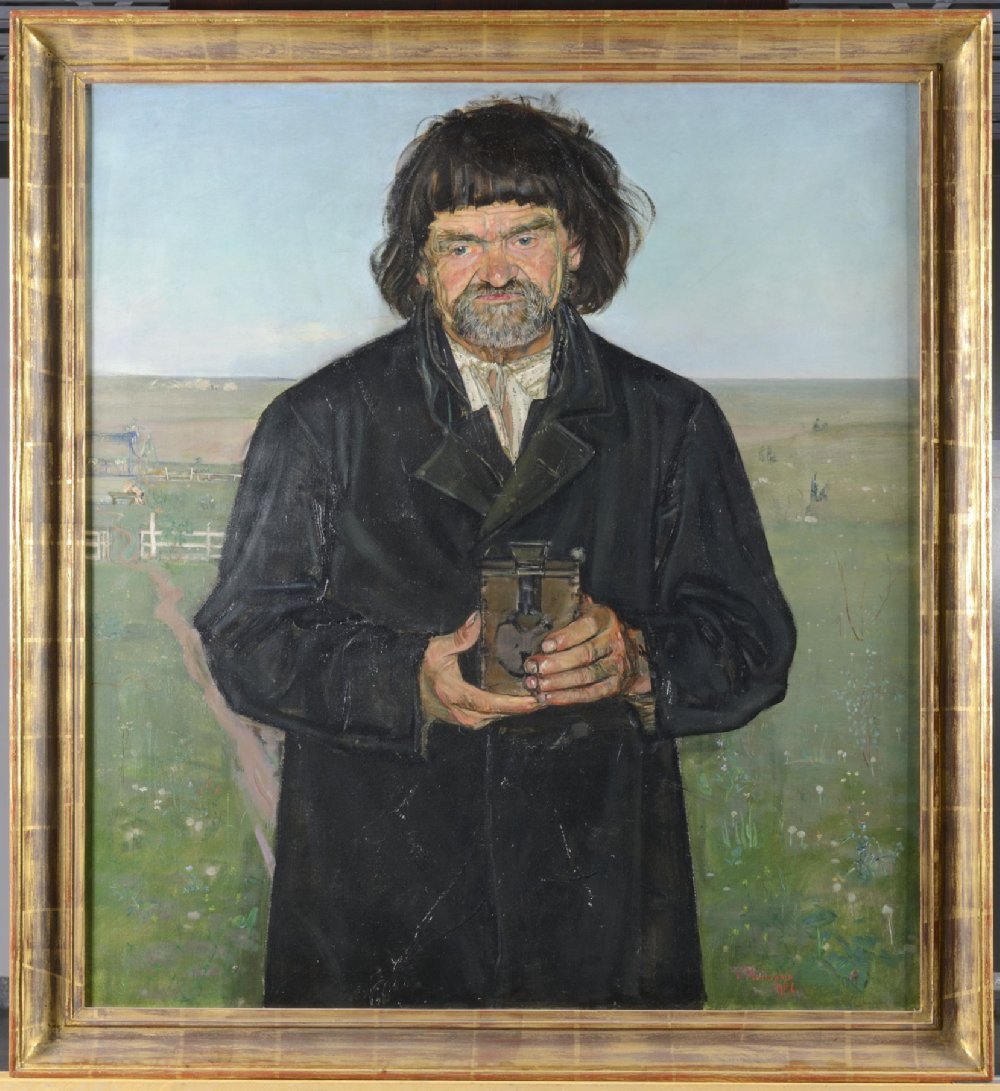Description:
Wlastimil Hofman, born in Karlin in the suburbs of Prague in 1881 to a Czech father and a Polish mother, moved to Krakow in 1889. In 1895, Hofman attended evening drawing classes at the School of Fine Arts in Florian Cynk’s studio. The following year, he dropped out of high school at the age of sixteen and was accepted into the Krakow School of Fine Arts. On the third year of his studies, he moved to Jacek Malczewski’s studio and participated in Jan Stanislawski’s outdoor classes. He graduated from the school as a primus with the opinion: “Hofman is an exceptionally talented individual, developing quickly and independently”.* The same year, he went to study in Paris, where he was a student of Leon Gérôme at the École des Beaux Arts for a year. Due to financial difficulties, he was forced to return to Krakow. There he opened his first studio on Dębniki. In 1905, he founded the Group of Four with Mieczysław Jakimowicz, Leopold Gottlieb, and Witold Wojtkiewicz, later transformed into the Group of Five (without Wojtkiewicz, with Jan Rembowski and Tymon Niesiołowski). They sought to revive the romantic idea of “correspondence of arts”, to revive the concept of affinity of the visual arts, literature and music proclaimed by Baudelaire. They chose their patron the great Polish romantic, poet, painter and draftsman Cyprian Kamil Norwid. Hofman participated in all the exhibitions of the group, including in Vienna (1906, 1908) and Berlin (1907). After the outbreak of World War I, he left with his father for Czechoslovakia. In the summer of 1917 he returned to Poland. After critical reviews of the first post-war exhibition, he decided to go to Szklarska Poręba. He stayed there until his death in 1970, exactly two years after his beloved wife Ada Hammer.
When discussing Wlastimil Hofman’s next work, it is worth noting the signature: “V Hofmann 1906”, visible in the lower right corner of the canvas. His Czech first name and German-sounding surname were the cause of numerous persecutions from Krakow teachers and classmates, which eventually led him to spoliate their spelling in 1918 to Wlastimil Hofman. In a conversation with Bogusław Czajkowski, he said of himself: “I have a German surname and a Czech name. I am neither German nor Czech. I am Polish.” In his opinion, the best way to convince the public of his “Polishness” was to create art that was typically Polish, native and thus referring to Polish folklore in all its aspects. Folk art fascinated the artist.* He believed that his Polishness was best expressed in his painting: “Although I do not paint pictures with a special patriotic content, it seems to me that each of my shrines, each roadside cross, each child’s head or vision of fantasy is impregnated with a deep love of Poland”.**
Description of the painting:
This painting, titled “Na światło” (Towards the Light) is considered one of the most interesting portraits of the artist. Painted in 1906, it depicts an elderly man full of simplicity and humility. He is clothed in festive attire: a black coat and a white shirt, tied up under the neck and standing in front of the viewer. In his hands he holds a rectangular metal box, locked with a heart-shaped padlock. His wrinkled, dirty hands bear the traces of work, which left its mark on his face. The peasant’s blue eyes are surrounded by wrinkles on his forehead, nose, and cheeks. His thick eyebrows and gray, trimmed beard contrast with his dark hair that reaches the shoulders, with a neatly trimmed bangs revealing the upper part of his face. Despite the fact that he came very close to us, he does not make eye contact with us. He gazes pensively to the right and down. The background of his figure, occupying almost the entire canvas, is a field with a white fence plot. Inside, a simple cross decorated with flowers looms. The old man is heading towards us down a rural road beginning at his feet. On the bench standing in front of him, a nude, seemingly young figure is outlined. The rural, festive landscape of the background further defines the portrayed figure and explains the meaning of the money box with alms collected “for eternal light” to the altar.
On a symbolic level, the problem contained in the picture can be related to the biblical promise of salvation, guaranteed by faith and sacrifice. The hope for eternal life can be the share of anyone, including the portrayed elderly man. His extraordinary eyes, looking at an invisible source of light, seem to speak of this. Reaching into the psyche of the portrayed, Hofman reveals his connection with mysticism and symbolism under the sign of Norwid. He leads him to painting, for which “the main theme should be man understood not only by way of intellectual knowledge, but also intuition, emotion, mystical states, sensations, experiences, dreams”.****


